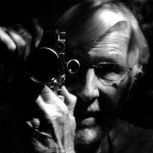Inverting Negatives in ACR
-
Recently Browsing 0 members
- No registered users viewing this page.
-
Similar Content
-
- 21 replies
- 2,222 views
-
- 35 replies
- 3,388 views
-
- 64 replies
- 3,427 views
-
- 6 replies
- 1,126 views
-
- 0 replies
- 194 views
-



Recommended Posts
Join the conversation
You can post now and register later. If you have an account, sign in now to post with your account.
Note: Your post will require moderator approval before it will be visible.